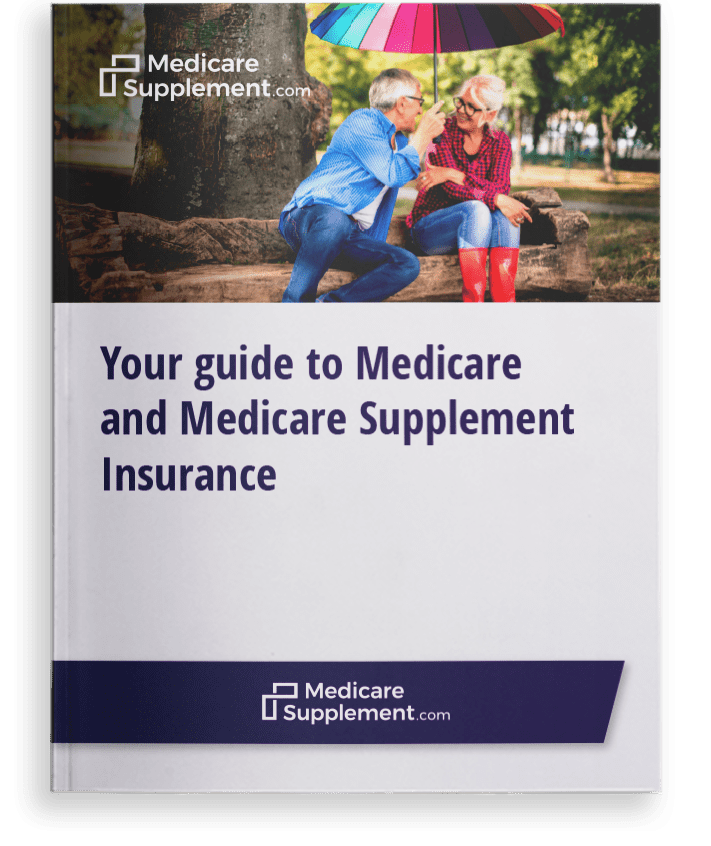Medicare 101
How Do Medicare Copays and Deductibles Work?
Copays are one of the out-of-pocket fees Medicare beneficiaries may be responsible for. Medigap plans can help you can help cover these costs.
A copay is your share of a medical bill after the insurance provider has contributed its financial portion. Medicare copays (also called copayments) most often come in the form of a flat-fee and typically kick in after a deductible is met.
A deductible is the amount you must pay out of pocket before the benefits of the health insurance policy begin to pay.
Compare Medigap plans in your area.
Find a planOr call now to speak with a licensed insurance agent:
1-800-995-4219

What is the Medicare Deductible for 2024?
In 2024, Medicare Part A comes with a $1,632 deductible per benefit period while Medicare Part B has a $240 annual deductible.
Compare Medigap plans in your area.
Find a planOr call now to speak with a licensed insurance agent:
1-800-995-4219
Does Medicare have a Copay?
Yes. Medicare copays and coinsurance can be broken down by each part of Original Medicare (Part A and Part B). All costs and figures listed below are for 2023.
Is There a Copay for Medicare Part A?
Yes. After meeting a deductible of $1,632, Medicare Part A beneficiaries can expect to pay coinsurance for each day of an inpatient stay in a hospital, mental health facility or skilled nursing facility. Even though it's called coinsurance, it operates like a copay.
- For hospital and mental health facility stays, the first 60 days require no Medicare coinsurance
- Days 61 to 90 require a coinsurance of $408 per day
- Days 91 and beyond come with a $816 per day coinsurance for a total of 60 “lifetime reserve" days
These lifetime reserve days do not reset after the benefit period ends. Once the 60 lifetime reserve days are exhausted, the patient is then responsible for all costs.
For a stay at a skilled nursing facility, the first 20 days do not require a Medicare copay. From day 21 to day 100, a coinsurance of $204 is required for each day. Beyond 100 days, the patient is then responsible for all costs.
Under hospice care, you may be required to make copayments of no more than $5 for drugs and other products related to pain relief and symptom control, as well as a 5% coinsurance payment for respite care.
Under Part A of Medicare, a 20% coinsurance may also apply to durable medical equipment utilized for home health care.
Is There a Medicare Copay for Part B?
Yes. Once the Medicare Part B deductible is met, you may be responsible for 20% of the Medicare-approved amount for most covered services. The Medicare-approved amount is the maximum amount that a doctor or other health care provider can be paid by Medicare.
Some screenings and other preventive services covered by Part B do not require any Medicare copays or coinsurance.
Compare Medigap plans in your area.
Find a planOr call now to speak with a licensed insurance agent:
1-800-995-4219
How is the Medicare Deductible Paid?
A deductible is paid online on Medicare.gov.
A deductible is the yearly sum you need to cover for healthcare services that are included in your Medicare plan, prior to coverage from the plan.
After you've fulfilled your deductible, your usual payment will involve only a copayment or coinsurance, with Medicare covering the remaining costs. Both Medicare Part A and Part B come with deductibles that you might be required to cover.
Medicare Part A
The Medicare Part A deductible in 2024 is $1,632 per benefit period. You must meet this deductible before Medicare pays for any Part A services in each benefit period.
Medicare Part A benefit periods are based on how long you've been discharged from the hospital. A benefit period begins the day you are admitted to a hospital or skilled nursing facility for an inpatient stay, and it ends once you have been out of the facility for 60 consecutive days. If you were to be readmitted after 60 days of being home, a new benefit period would start, and you would be responsible for meeting the entire deductible again.
Medicare Part B
The Medicare Part B deductible in 2024 is $240 per year. You must meet this deductible before Medicare pays for any Part B services.
Unlike the Part A deductible, Part B only requires you to pay one deductible per year, no matter how often you see the doctor. After your Part B deductible is met, you typically pay 20 percent of the Medicare-approved amount for most doctor services. This 20 percent is known as your Medicare Part B coinsurance (mentioned in the section above).
Cover your Medicare out-of-pocket costs
There is one way that many Medicare enrollees get help covering their Medicare out-of-pocket costs.
Medigap insurance plans are a form of private health insurance that help supplement your Original Medicare coverage. You pay a premium to a private insurance company for enrollment in a Medigap plan, and the Medigap insurance helps pay for certain Medicare out-of-pocket costs including certain deductibles, copayments and coinsurance.
The chart below shows which Medigap plans cover certain Medicare costs including the ones previously discussed.
Scroll to the right to continue reading the chart
Medicare Supplement Benefits
Part A coinsurance and hospital coverage
Part B coinsurance or copayment
Part A hospice care coinsurance or copayment
First 3 pints of blood
Skilled nursing facility coinsurance
Part A deductible
Part B deductible
Part B excess charges
Foreign travel emergency
| Medicare Supplement Benefits | A | B | C* | D | F1* | G1 | K2 | L3 | M | N4 |
|---|---|---|---|---|---|---|---|---|---|---|
| Part A coinsurance and hospital coverage | ||||||||||
| Part B coinsurance or copayment | 50% | 75% | ||||||||
| Part A hospice care coinsurance or copayment | 50% | 75% | ||||||||
| First 3 pints of blood | 50% | 75% | ||||||||
| Skilled nursing facility coinsurance | 50% | 75% | ||||||||
| Part A deductible | 50% | 75% | 50% | |||||||
| Part B deductible | ||||||||||
| Part B excess charges | ||||||||||
| Foreign travel emergency | 80% | 80% | 80% | 80% | 80% | 80% |
* Plan F and Plan C are not available to Medicare beneficiaries who became eligible for Medicare on or after January 1, 2020. If you became eligible for Medicare before 2020, you may still be able to enroll in Plan F or Plan C as long as they are available in your area.
+ Read more
If you're ready to get help paying for Medicare out-of-pocket costs, you can apply for a Medigap policy today.
Find Medigap plans in your area.
Find a plan
Get a Free Medicare Guide!
Enter your email address and get a free guide to Medicare and Medicare Supplement Insurance, as well as important Medicare news and tips. We promise to never send you spam – just helpful content!
By clicking "Get your guide" you are agreeing to receive emails from MedicareSupplement.com.

